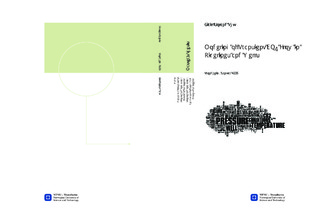| dc.description.abstract | CO2 capture and storage (CCS) may play a significant role in reducing carbon dioxide emissions in the near future, but to achieve this, there are some key challenges that need to be addressed further. This work will focus mainly on the injection part and is largely based on simulations of the Sleipner, Snøhvit, In Salah and Ketzin injection wells. The aim of this work is to model transient flow in the CO2 injection wells at Sleipner, Snøhvit, In Salah and Ketzin with OLGA, in order to identify the current capabilities and limitations. This in turn will form the basis for discussing some of the challenges related to injecting CO2 under various operating and ambient conditions. Large scale implementation of CCS would naturally involve a wide range of operational conditions, both in terms of pressure, temperature, composition, flow regimes and fluid properties, to mention some. The geological spread will naturally also define the boundary conditions at the specific location, and will together with the operational conditions determine how the well behave and respond under various conditions. Varying boundary conditions involve amongst others changes in surface pressure and temperature, temperature and pressure gradients, heat transfer and reservoir conditions, and will depend on factors such as the geographical location, reservoir depth and the properties of the surrounding formations. Four existing injection wells, Sleipner, Snøhvit, In Salah and Ketzin, where modeled in order to show how various operating and boundary conditions may change how the wells respond to different scenarios. For all the models, a steady state solution was obtained assuming normal operating conditions. Then, using this as the initial conditions, typical transient scenarios such as blowout and shut-in were simulated for all the wells. This should intentionally illustrate how dynamic simulations can be used to increase the general understanding of the behavior of CO2 under various conditions. All simulations were performed using the dynamic multiphase flow simulator OLGA v7.2 and the single component module. When viewing the results however, it is important to acknowledge the limitations of the module and the assumptions made in the design of the models. Due to license issues, it was not possible to run all the simulations with the CO2 VIP module as initially intended. This would likely have given a more stable results, as the governing equations has been rewritten to better handle pure components and fluids with narrow phase envelopes. The simulations did to a large extent confirm the known limitations of the applied single component module. Accordingly, numerical instabilities were encountered in a varying extent, near the critical point. The reason for the numerical instabilities is that the fluid properties in this region may change drastically for small changes in pressure and temperature. The CO2 VIP module, did on the other hand show promising results, and nearly eliminated the numerical instabilities related to operation in the critical region. Some fluctuations were still present within the two-phase region, but without operational data, it was not possible to validate the model or estimate the accuracy of the results. It was a general trend that all the simulations operating near the critical point did experience numerical instabilities. For the blowout simulations with reservoir backflow, the results were particularly unstable. This seemed to be caused by the elevated pressure which caused the conditions to remain in the critical region for a large part of the simulation. The blowout simulations without reservoir backflow gave better result, but instabilities were still encountered for those simulations entering the critical region. Sleipner was the only well subject to numerical instabilities of significance during the shut-in. This seemed to be caused by the specified boundary conditions, which also here lead the solution to remain in the critical region for a large part of the simulation. Operation below the triple point seemingly gave rise to more unphysical results, and was experienced for both the blowout scenarios, depending on whether the wellhead left the phase envelope before the triple point pressure was reached or not. This was also expected to some degree, as pressures and temperatures below the triple point are outside the validity range of OLGA. The initial and boundary conditions also proved to have a major impact on the results. Although the Snøhvit well was specified with a higher backpressure due to the subsea wellhead, the lower initial temperature did seem to give a more isenthalpic depressurization when compared to In Salah for instance. This in turn, seemed to be the reason why the discharge temperature did not decrease as much as the In Salah case, as large parts of the depressurization was done in the liquid region where the isotherms are more vertical. The Ketzin well did not encounter any numerical issues of significance and can largely be explained by the initial state, well within the superheated region. The main difference that distinguishes the behavior of CO2 from common substances such as oil, natural gas and water, is the location of the critical and triple point. As shown by the simulations, the critical region was within the operational range for Sleipner at constant injection and during the shut-in, and all Sleipner, Snøhvit and In Salah blowout simulations. The Ketzin well barely touched the saturation line towards the end of the shut-in, but did not enter the two-phase region during the blowout simulations. The low wellhead pressure also led the solution outside the critical region. None of the shut-in simulation did show excessive drop in temperature, and was largely explained by the gradual shut-in procedure obtained from the operational data at Snøhvit. The blowout simulations on the other hand, did indicate temperatures well below -20°C for all the wells except Snøhvit. The low temperature is mainly explained by the large drop in pressure and the subsequent evaporation of the liquid content. CO2 also has a high Joule-Thomson coefficient, which causes additional cooling as the fluid expands up the well. It is therefore the rate of change in pressure which gives rise to the low temperature in the wells, as the heat transfer with the surroundings at this rate becomes too low to maintain the temperature. Operational data were also made available by Statoil, and used to match the simulation results from the Snøhvit shut-in. The results did close in on the measured data at the wellhead, but the final result seemed to be at the expense of accuracy of the respective parameters. As the iteration cycle is determined to find the solution with the lowest deviation from the measured data, it does not necessarily have to be the most likely combination of parameters. It is therefore very important to be aware of what to expect, and how the parameters are likely to vary. In general, all simulations operating in the critical region did show signs of numerical instability, but the extent varied according to the operating and bounding conditions. Operation below the triple point gave more unphysical results. The CO2 VIP module showed promising results and nearly eliminated the numerical instabilities in the critical region, but needs to be verified. Critically low temperatures were experienced during blowout, but the extent was largely dependent on the operating and bonding conditions. During shut-in on the other hand, all wells remained above 0°C. | nb_NO |

